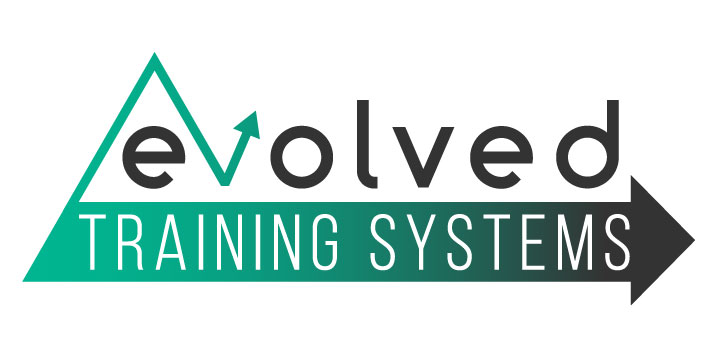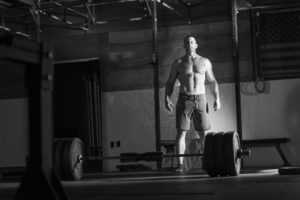Intensity: Progressing the Stimulus
Since the beginning of my hypertrophy style programming, I have always favored an approach that increases effort week to week.
For the last couple years, this has meant starting a 4-week training block around 3-4 reps from failure, and then progressively adding weight and/or reps week to week, such that the final week before deload is trained at 0-1 reps from failure.
As with any of my training programs, the process of discovery always begins by implementing things into my own programming first. Then this often is applied to individual 1 on 1 clients to see how they respond.
I am extremely excited to say that both myself and my clients have seen tremendous success with a slight twist on this idea of increasing effort week to week.
I now call it “Progressing the Stimulus”
To fully buy-in, you must first understand that there are two types of exercises:
1. Lengthened Overload Movements
2. Short Overload Movements
While not always the case, it is common that the “compound” movements are lengthened overload, where isolation movements are short overload.
However, the true determination, is where the movement is hardest.
Squat variations, RDL/Deadlifts, and Bench press variations are all hardest at the bottom and have literally no resistance on the target musculature at the top.
Leg Extensions, Leg Curls, and almost all Row or Pulldown variations are examples of short overload movements (where the exercise is most challenging at the contracted position).
The pulldown or row is also an example of a compound movement that is NOT lengthened overloaded.
A free weight Tricep Extension (“skull crusher”) is an example of an isolation movement that is lengthened overloaded.
When you look at a DB fly versus a Cable/banded crossover, you’ll see two movements that have an identical arm path, but one is hardest in the lengthened/stretched position, and the other is hardest in the short/contracted position.
When it comes to programming, the lengthened movements are mostly remaining unchanged. The progression will continue to go from 3-4 reps from failure to around 1-rep from failure in the week before deload. Because these movements are so demanding and so stimulative, you can get plenty of gains further from failure (research has been very confident in this regard).
The way I program short overload movements has changed quite a bit. I don’t see much of a reason to spend any time at 3-4 reps from failure.
Where the overload occurs in an exercise has a massive effect on how much stimulus and fatigue will result from a hard set of that movement. The fatigue cost of going close to failure on a short overload movement is so low, that there is no reason NOT to work harder on those exercises (get more stimulus).
The lengthened movements are both more stimulative and more fatiguing.
Let’s go even deeper…
Studies are now quite convincingly demonstrating that there is a significant benefit in trying to bias the lengthened position of short overload movements.
How can we do that?
Let’s take a Row movement as an example. A simple DB Row. Because it is short overloaded, you will fail in the ability to complete a FULL REP, but you will still be able to manage 90% of the range of motion. In effect, this is exhausting the short position (the contraction), but it isn’t fully training the lower portions of the range of motion (which are potentially MORE beneficial ranges for hypertrophy).
This is precisely why I’ve began using two new tools in my programming of short overload movements:
1. Partial reps after failure
This means that you successfully reach “failure” of full range of motion reps. Then, despite your maximum effort to achieve a full rep, you only can achieve 80-90% of the rep. I will usually program these in sets of 3-6 partials, where you may see the range of motion finish at 25-40% of the full range of motion (as you would expect ROM to decline with each partial rep, due to accumulation of fatigue)
2. Reverse Dropset
More rarely will I use the Reverse Dropset. It is more of a sledgehammer approach, where the partials may be considered a bit less demanding. In a reverse dropset:
A. Complete FULL REPS to 1-2 Reps from failure
B. QUICKLY add 20-25% weight
C. Accumulate partial reps to equal the “full reps” achieved
Example:
DB Row 60# x 9 Reps (1-2 reps from fail)
Quickly switch out to the 80# DB
Accumulate approx 9 partial reps with 80#
—
The Progression of Proximity to Failure
Ultimately, I strongly believe in this idea of PROGRESSING THE STIMULUS week to week.
For the lengthened overload movements, as we discussed above, will remain unchanged from prior cycles:
Week 1: 3-4 reps from failure
Week 2: 2-3 reps from failure
Week 3: 1-2 reps from failure
Week 4: ~1 rep from failure
For the short overload movements, it may look something like this going forward:
Week 1: 1-2 reps from failure
Week 2: 0-1 reps from failure
Week 3: Add partial reps
Week 4: Reverse Dropset (or more partial reps)
Not to complicate it further, but lengthened movements really aren’t conducive to doing partials. You can’t fail a squat, then just do partial reps. Beyond safety, and impracticality, just attempting to do so would cause an unfathomable amount of fatigue.
However, this brings the question, how can we add intensity to movements that are lengthened overload?
While not necessarily a tactic we’d use on the squat or deadlift movements, the “rest/pause” set is a great way to add intensity to isolation movements, such as a tricep extension or DB fly type exercise.
In a rest/pause set, you complete a set close to failure. Then rest an INCOMPLETE amount of time. Usually this is somewhere between 10-30 seconds. You will then continue to accrue reps on the same exercise. In application, it may look like:
Tricep Extension x 10-12 Reps
Rest 15 seconds
Tricep Extension x 4-6 Reps
Rest 15 seconds
Tricep Extension x 3-5 Reps
In effect, we’ve accumulated a ton of super hard reps close to failure, but did this in a time-effective manner. Instead of using normal “full rest” and having to do these initial “easy” reps, just to get to the hard stuff, we essentially get right to the good stuff.
—
This will be the model we follow for the upcoming cycle, and probably many of the cycles going forward.




